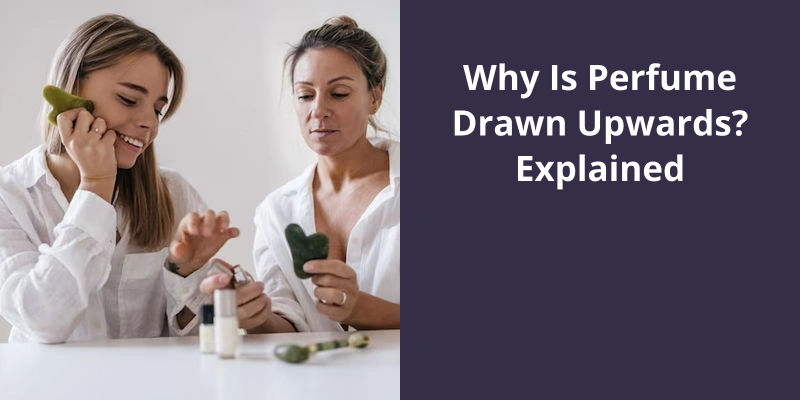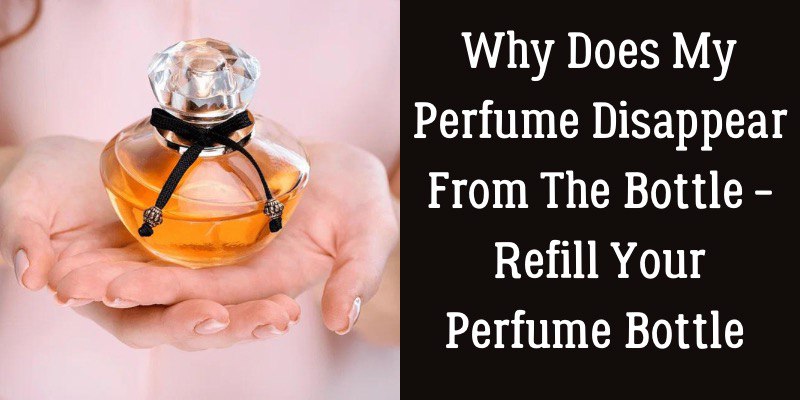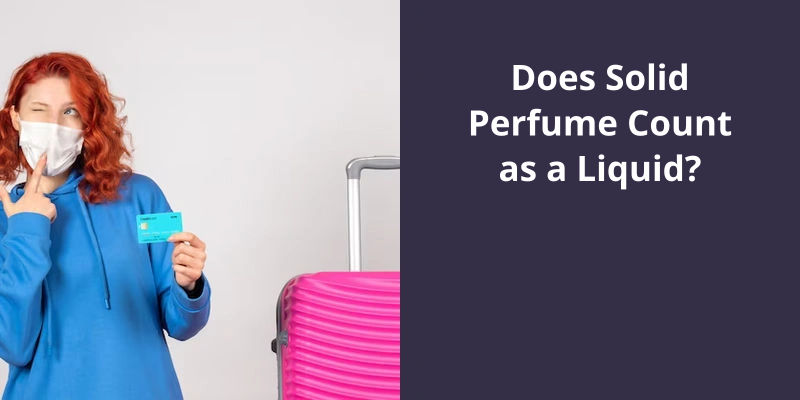Perfume has long been a popular item and is considered by many to be an essential part of personal grooming. However, have you ever wondered why perfume seems to defy gravity and is drawn upwards out of the bottle? A common explanation for this phenomenon is the Bernoulli effect, also known as Bernoulli's principle. According to this principle, when you squeeze the bulb atop the bottle, it creates a low-pressure area due to the higher speed of the air, which then draws the fluid up out of the bottle. This principle is rooted in physics and has been studied extensively by scientists and mathematicians alike. While simple in theory, the Bernoulli effect has countless practical applications and is essential to our understanding of how fluids behave in various contexts.

What Is the Principle of Perfume Bottle Works?
Perfumes have been a part of human life for thousands of years and the way we store and apply them has also undergone significant changes. The perfume bottle that we use today has a simple yet sophisticated design that relies on the principle of fluid dynamics to dispense the fragrance.
The principle that governs the operation of perfume bottles is known as Bernoullis principle. Named after the Swiss mathematician Daniel Bernoulli, this principle states that when the speed of a fluid increases, it’s pressure decreases. This principle applies not just to liquids but also to gases, including air.
The mechanism of a perfume bottle involves a small tube that protrudes from the bottles neck. This tube is placed at an angle and has an opening at the top through which the perfume is released. When a person presses the atomizer, the air inside the tube rushes out at high speed due to the pressure difference between the inside and outside of the bottle.
As the air rushes out, it creates a low-pressure area at the top of the tube. This low-pressure area pulls the perfume liquid up the tube, which then mixes with the rushing air. The combined stream of air and perfume passes through the opening in the tube, creating a fine mist that spreads out into the surrounding area.
The design of perfume bottles has evolved over time to ensure that the atomizer mechanism works well. The size and shape of the tube, the angle at which it’s placed, and the type of atomizer can all affect the fine mist produced by the perfume bottle.
Appreciating the science behind our everyday objects can help us understand and appreciate the world around us better.
History of Perfume Bottles and Their Designs
- Egyptians crafted perfume bottles from glass, stone, and ceramics as early as 3000 BCE.
- Roman glassblowers used a blowing technique to create intricate and elaborate perfume bottles in the 1st century CE.
- During the Middle Ages, perfume bottles were made from exotic materials like ivory, gold, and silver.
- The Renaissance brought a resurgence in interest in the aesthetics of perfume bottles, with artisans experimenting with shapes and designs.
- The Art Nouveau movement in the late 19th century inspired new shapes and designs for perfume bottles, featuring organic and flowing forms.
- The Art Deco period in the 1920s and 30s popularized geometric and angular shapes, with cut crystal and colored glass.
- The mid-20th century saw the rise of minimalist designs, featuring simple and unadorned glass bottles.
- Today, perfume bottles continue to be a canvas for creative expression, with designers using a range of materials and techniques to create unique and captivating vessels for fragrances.
Perfume bottles have been a staple in the world of luxury for centuries. They come in many shapes and sizes with intricate designs, but have you ever noticed that they’re never filled to the brim? There’s actually a logical explanation behind this common practice. The space between the liquid and neck of the bottle is known as ullage, and it serves an important purpose in preserving the quality of the fragrance. Let’s explore why perfume bottles are never filled to the top.
Why Aren’t Perfume Bottles Filled to the Top?
When it comes to perfume bottles, one may wonder why they’re never filled to the brim. This is because perfume is highly sensitive to changes in temperature, which can cause the liquid to expand or contract. As a result, the space between the liquid and the neck of the bottle is known as ullage, which acts as a buffer to prevent the perfume from leaking or bursting the container during transport or storage.
Ullage is a common practice in the perfume industry, and it allows for the stability and consistency of the fragrance to be maintained over time. This process also helps to prevent any unwanted chemical reactions that could cause the perfume to become unstable or change it’s scent composition, making it less desirable to the consumer.
It allows for room to be added for the perfume atomizer to function properly, ensuring that the scent is dispensed at the correct rate without any leakage.
Another reason why perfume bottles aren’t filled to the top is that it helps to prolong the shelf life of the fragrance. By leaving a small portion of air in the bottle, the oxidation process that can lead to the evaporation or breakdown of the perfumes ingredients is slowed down, prolonging the life of the fragrance.
Whether it’s due to temperature fluctuations, transportation or packaging costs, the space between the liquid and neck of the bottle is an industry-standard that ensures consumers receive the best product possible.
The Environmental Impact of Perfume Packaging and How It Can Be Reduced.
This topic explores the impact of perfume packaging on the environment and ways to reduce it. It emphasizes the importance of sustainable packaging materials and designs to reduce waste and carbon footprint.
Now that we’ve discussed the basic mechanics of a perfume atomiser, let’s dive deeper into the role of the valve in this process. The valve is a critical component that controls the flow of liquid from the bottle to the nozzle, ensuring that the correct amount is dispensed with each spray. Understanding how this valve works can help us appreciate the complexities involved in creating a high-quality fragrance experience.
How Does a Perfume Valve Work?
The nozzle of a perfume valve plays a crucial role in the functionality of perfume atomisers. The nozzle has a tiny opening through which the fragrance mist is released. The size of the nozzle determines the size of the droplets that are sprayed. The smaller the nozzle, the finer the mist. The nozzle can be adjusted to control the amount of fragrance released with each spritz. Additionally, some perfume atomisers also have a locking mechanism to prevent accidental sprays.
In order for perfume atomisers to work properly, they require a consistent flow of air. Most perfume atomisers use a simple air pump system that utilizes a manual or electronic pump mechanism to force air into the bottle. This increases the pressure inside the bottle and propels the fragrance mist out of the nozzle. The air pump system ensures a consistent flow of air to create a fine mist that can be evenly distributed over an area.
The nature of perfume valves makes them susceptible to clogging. Over time, residual fragrance or dust can build up within the nozzle, causing it to become clogged. This can impact the spray pattern and overall effectiveness of the atomiser. To prevent clogs, it’s essential to keep the nozzle clean by using a small cleaning tool or by running lukewarm water through it periodically.
In addition to the nozzle and air pump system, the material of the bottle can also affect the performance of the perfume atomiser. Most perfume atomisers use glass or plastic bottles to hold the fragrance. However, the type of plastic used can impact the quality of the fragrance. Some plastics can break down and react with the scent, altering it over time. Thus, it’s important to ensure that the bottles used in perfume atomisers are made of high-quality materials that are compatible with the fragrance.
Using a perfume atomizer has become increasingly popular in recent years due to it’s practical advantages. Not only does it help reduce the wastage of perfume, but it also ensures that the user gets the most out of their fragrance. These devices offer a more precise and controlled way of applying perfume, allowing for more efficient use and a longer-lasting scent. In this article, we’re going to explore the various benefits of having a perfume atomizer in your collection.
What Are the Benefits of a Perfume Atomizer?
In addition to preventing waste, perfume atomisers offer a number of other benefits. For one, they make it easier to transport and use perfume on-the-go. Atomisers are small and compact, making them an ideal option for travel or touch-ups throughout the day. Plus, theyre easy to refill, so you can switch up your scent without having to carry multiple bottles.
Perfume atomisers also add an element of glamour and luxury to your fragrance routine. The spritzing action is reminiscent of the classic Hollywood movies where glamorous women would powder their noses and spritz themselves with perfume from ornate atomisers. Using one today can make you feel like a classic Hollywood starlet and add a touch of sophistication to your everyday routine.
Rather than committing to a full bottle of a new scent, you can purchase a smaller amount and use your atomiser to apply a small amount at a time. This is especially useful for scents that are more potent or heavy – you can use just a tiny amount to get the desired effect.
Source: What’s a Perfume Atomiser? – Lifestyle Packaging
Now that we’ve covered the importance of the nozzle in perfume atomizers, let’s explore other crucial components of a perfume bottle that contribute to it’s functionality and aesthetic appeal.
What Is the Top Part of a Perfume Bottle?
The nozzle is a crucial component for a perfume bottle as it determines the spray pattern and intensity of the fragrance. A well-designed nozzle ensures an even distribution of the scent, making it the most important part of the atomizer. The nozzle usually has a small hole in the middle, which forces the liquid through a tiny opening to create a fine mist. The size of the hole determines the size of the droplets, thus affecting the intensity and spread of the fragrance.
Manufacturers often design and customize the nozzle to suit the overall theme and appearance of the bottle. Some perfume brands use elaborate nozzle designs to create an impression of luxury and exclusivity. The use of metal nozzles gives the bottle a premium look and feel, while plastic nozzles are preferred for their durability and lightweight.
Some bottles come with a cap that covers the nozzle to prevent accidental spills or leaks. The cap also protects the nozzle from getting clogged with dust or debris. In case the nozzle gets clogged, users can clean it using water or a soft cloth without damaging the bottle or fragrance.
What Are the Different Types of Perfume Nozzles, and What Are Their Advantages and Disadvantages?
- Atomizer Nozzles: Advantages – They allow for a fine mist application of perfume, which helps to evenly distribute the fragrance and increase it’s coverage area. Disadvantages – They may not be suitable for thicker liquids and can sometimes clog.
- Rollerball Nozzles: Advantages – They’re easy to use and offer precision application, which is ideal for targeted areas. Disadvantages – They may not be as efficient in dispersing the fragrance and may require more application to achieve the desired effect.
- Pump Nozzles: Advantages – They’re versatile, suitable for both thick and thin liquids, and offer a greater application control. Disadvantages – They can be expensive and may not always distribute the fragrance evenly.
- Dip Tube Nozzles: Advantages – They’re convenient for travel and easy to use. Disadvantages – They may not offer as much control as other types of nozzles, and the fragrance may evaporate quickly if the cap isn’t secured properly.
Conclusion
In conclusion, the reason why perfume is drawn upwards is due to the Bernoulli effect, which is a principle in physics that describes the relationship between fluid speed and static pressure. This principle, named after the Swiss mathematician and physicist Daniel Bernoulli, has important applications in various fields such as aviation, hydraulics, and even medicine. Understanding the Bernoulli effect helps us appreciate the fascinating intricacies of the natural world and encourages us to explore and discover more about the physical phenomena that shape our everyday experiences.





